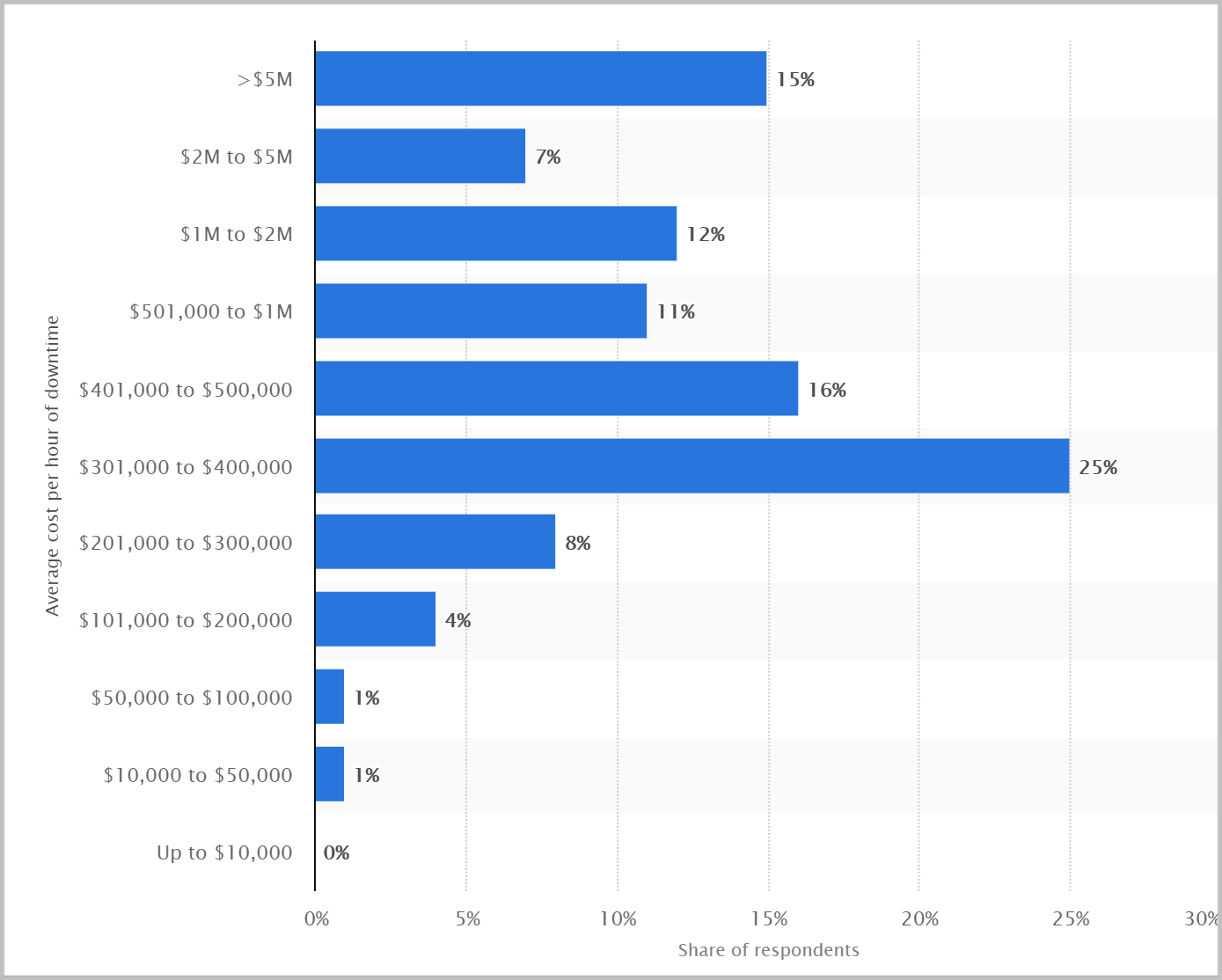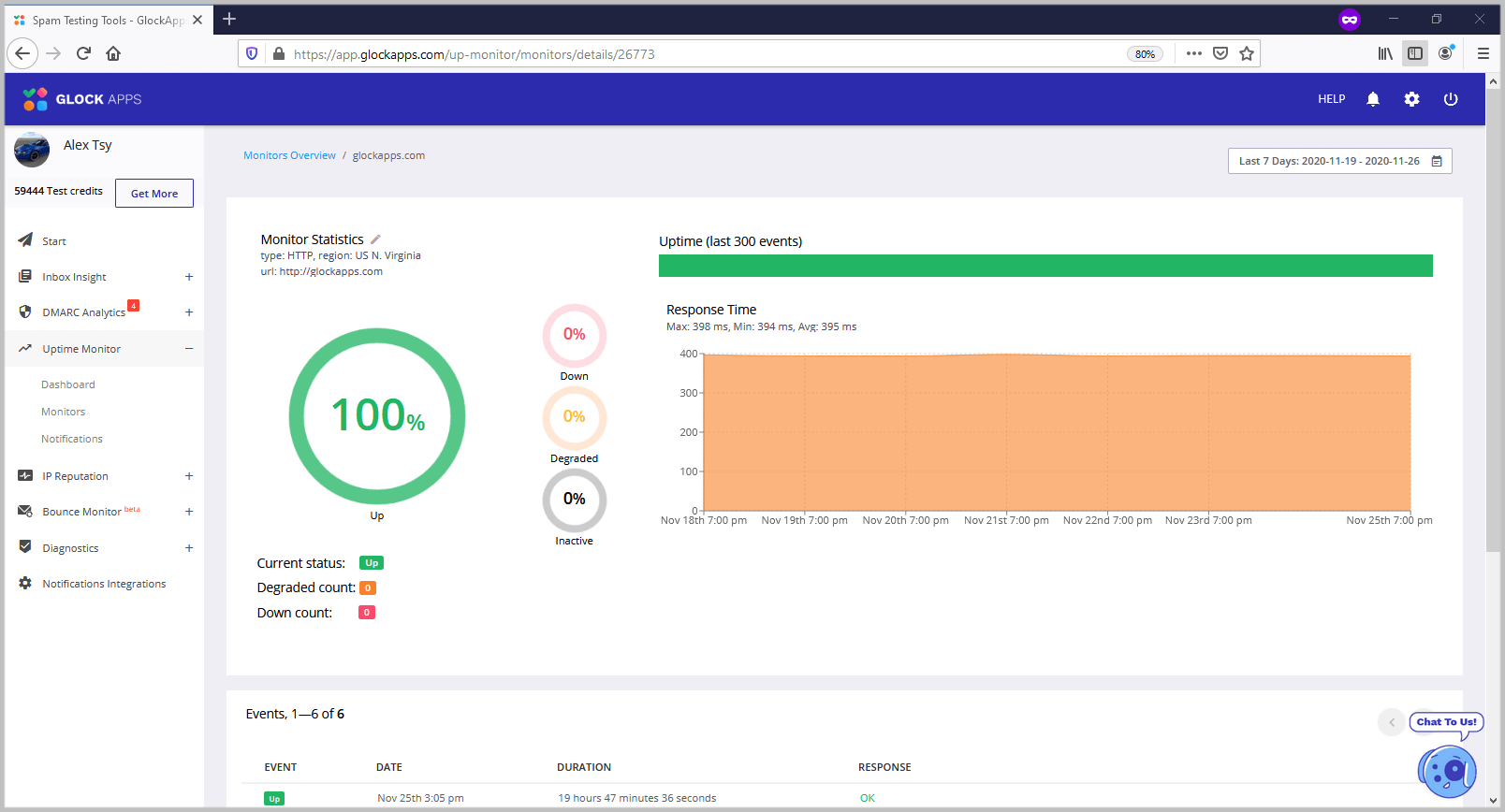4 Reasons to Start Website Uptime Monitoring Right Now
A crashed server is not a matter of ‘If’ it is a matter of ‘When’. Our time and age do not allow much room for hesitation, and every successful business must constantly be present online. So an unavailable website, as you will see later, can result in millions of revenue losses. That is why website uptime monitoring is crucial for any business.
What is the Website Uptime and Its Monitoring
Website uptime is the amount of time when the website is available for users. When the website crashes and becomes unreachable – it counts as website downtime.
Uptime is calculated as the amount of time the website was available, to the whole time of a period (month, year, etc.). The uptime holy grail is 100%, but realistically speaking, it is highly unlikely to happen. So it is better to orient on the so-called ‘five nines’ – 99.999% uptime.
The yearly uptime rate of 99.999% will amount only to 5.25 minutes of downtime annually and doesn’t sound serious. But 99.9% uptime result will already be 8.76 hours of downtime; 98% (which is still a good uptime) – 7 days and 7 hours of a website being unavailable for clients.
Website uptime monitoring was invented for this particular reason – to check whether a website is available or not. Such service regularly runs automatic checks 24/7, and if downtime happens – it sends an instant notification.
So, why is it so important to continually monitor your uptime, and what happens even to the best of us when a major breakdown occurs?
Consequences of Downtime
1. Losing Revenue
In the highly competitive environment that the Internet is, if your website is unavailable, the user is not going to wait and will simply switch to your competitor. And while it is an unfortunate situation for an offline business, for e-commerce companies it is vital.
Nothing can explain this aspect better than plain statistics. According to Statista 2019 survey, an hourly server outage cost between 301,000 and 400,000 U.S. dollars to 25% of respondents.
The average cost per hour of enterprise server downtime worldwide in 2019
No website is immune to downtime – back in 2013, Amazon was down for only half an hour and theoretically was losing around $66,240 per minute. The impact of an undetected downtime for a small business can have even worse consequences.
2. Damaging Reputation
Although not as obvious as money loss, the brand’s reputation also suffers due to the website downtime.
Every time your clients encounter inconveniences related to website unavailability – there are irritated customers, complaints, often on Twitter and other social media, and prospects who will probably never convert. And by reputation, I’m talking not only about the company’s website but rather a brand’s reputation as a whole. Since people tend to extrapolate, the slow, laggy, or unavailable website could cast a shadow on the perception of the brand and its product as being not that good.
3. Losing Position in Google Search
GoogleBot checks different aspects of your website regularly to define the ranking position but seldom do we think about uptime having the influence. But if your website is unavailable – the crawler simply can’t access and index it.
Google understands and takes into account the possibility of downtime. The website needs to be maintained and can be out of reach for a day. But if a website has a recurring downtime problem and the crawler doesn’t have access to it, Google would not want to send a user to such a website since it will not provide a good user experience. As a result, your ranking will get significantly lower.
4. Possible Cyber-Attacks
Website downtime can indicate website hacking – for example, malicious actors send an excessive amount of traffic to the website so that the servers will not be able to process it and crash. Such a technique is called the Disruptive Denial of Service (DDOS). Without going into details, the fact is – you might not be aware that your website has been hacked, meanwhile, your users will be lured to a false website, valuable and sensitive data will be stolen, and the trust in your brand will be undermined.
How Uptime Monitoring Helps
The Uptime Monitoring does not prevent a website from crashing, so why do I need it?
Uptime Monitor checks your website uptime at 5-minute intervals 24/7 and sends immediate alerts if any issue happens to minimize downtime and save you money, customers, and reputation.
GlockApps HTTP Uptime Monitor
How does Uptime Monitoring help?
- Be aware of even the shortest downtime. Your website could experience short-term outages that would fly under your radar, but at the same time, affect your search engine ranking. GlockApps allows you to set check frequency up to 1-minute intervals to make sure you will receive an alarm exactly when downtime happens.
- Keep your reputation intact. Even a slow service (much so downtime) will affect the customer experience – statistically, a person will not wait longer than 2-3 seconds for a website to load. At GlockApps Uptime Monitor, you can also see a degraded status that indicates that a website is reachable but does not work at its maximum capacity.
- Minimize financial losses. Whether it is a revenue loss due to a server crash or a hacking attack, timing is crucial. The sooner you find out about the issue, the faster you can take action. GlockApps Uptime Monitoring allows you to choose the best notification channel for you and your team to receive immediate alerts – Telegram, Slack, and email.
It’s time for you to take control of your website!
With a GlockApps Uptime Monitor free account, you get:
- 5 system monitors (HTTP, TCP, TLS, SPF, DKIM, DMARC);
- 5-minute monitoring intervals for fast, reliable status updates;
- Real-time alerts of any issues.Start Free Trial






